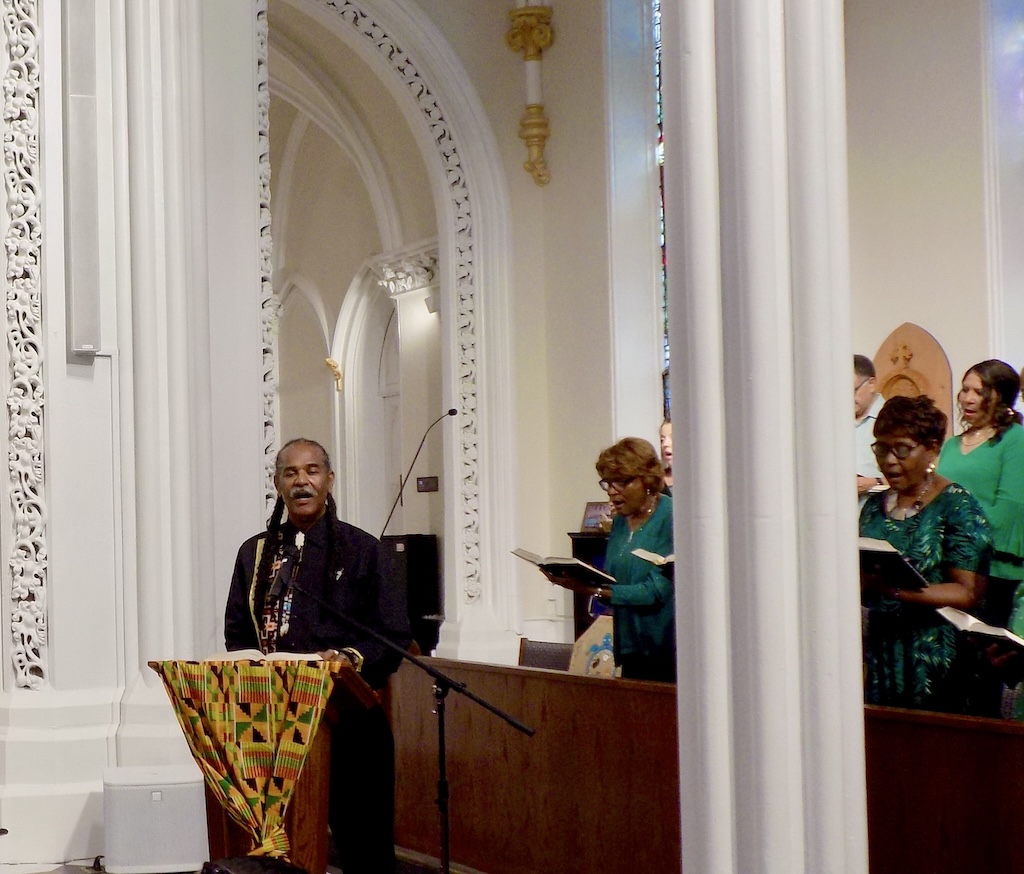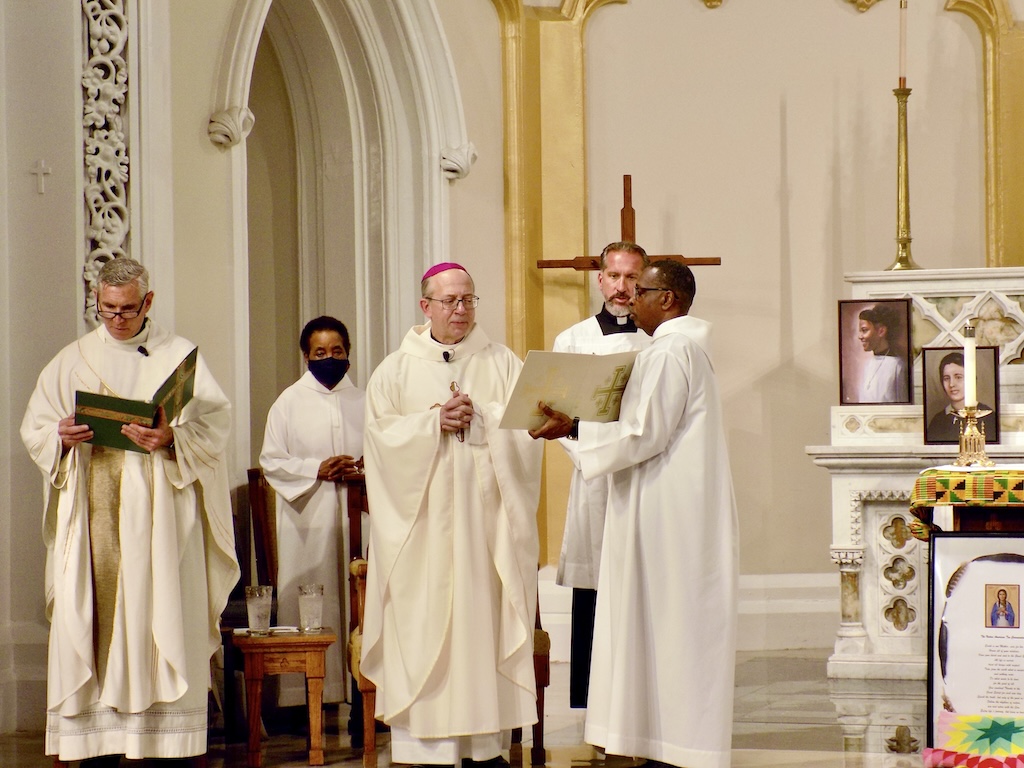The Six Directions St. Kateri Circle, along with the Diocese of Richmond’s Office of Ethnic Ministries, sponsored a two-day celebration July 13 and 14 at the Basilica of St. Mary of the Immaculate Conception, Norfolk, in honor of the memorial of St. Kateri Tekakwitha, the Catholic Church’s first Native American saint.
The event featured a Native American Mass held at the basilica July 13, celebrated by Bishop Barry C. Knestout, and concelebrated by Father James Curran, rector of the basilica.
“I loved the integration of Native American and Western culture in the Mass,” said Richard Duran, of the Diocese of Raleigh, who traveled from North Carolina for the weekend.
The weekend included talks and workshops, food, music, fellowship, and prayer.
“Our goal is to bring all people together: Catholic and Non-Catholic, Indigenous and non-Indigenous,” said DJ Bradley, a parishioner at the basilica and a founding member of the Six Directions St. Kateri Circle, which promotes Native American heritage within Catholicism. “We are Catholic Native Americans who welcome all people.”
The diocesan Office of Native American Ministry, which falls under the Office of Ethnic Ministries, has served the Native American Catholic communities of our diocese for many years, said Daniel Villar, director of the office.
“For this event, we have accompanied and supported the Six Directions St. Kateri Circle of Virginia with resources that help celebrate the feast day of St. Kateri Tekakwitha and the worship of Christ through her devotion,” he said.
St. Kateri holds a special place in the lives of many Native American Catholics, said Gail Rando, secretary of the St. Joseph’s French Street St. Kateri Circle in Wilmington, Delaware, who traveled to Norfolk for the event.
“She’s so humble. Trying to emulate her life is not easy, but it’s what we strive for,” Rando said.

A consecrated life
Born in 1656, in what is today New York, St. Kateri is often called “the Lily of the Mohawks.”
“The lily is most often a symbol of purity,” Bishop Knestout said, an apt symbol for a woman known for her charity, industry, purity, and fortitude.
At the age of four, she contracted smallpox. Her parents and brother died in the epidemic, and she was left scarred and partially blind.
Thereafter, she veiled herself, Bishop Knestout said. She was a quiet person, known for her skill at weaving.
As a child, she became interested in the teachings of a group of French Jesuit priests who had settled in the area. Her aunt and uncle forbade her from approaching the missionaries, wishing for her to retain her culture and traditions.
At 19, she converted to Catholicism. She took a vow of perpetual virginity, spending the remaining five years of her life at a Jesuit mission village south of Montreal.
“She led a consecrated life, not in an official way, because of the prejudices of the time,” Bishop Knestout said. She had an instinctive sense of her calling.
She died when she was 24 years old. Kateri was beatified by Pope John Paul II in 1980 and canonized by Pope Benedict XVI October 21, 2012.
One, holy, catholic, and apostolic
A new document, “Keeping Christ’s Sacred Promise: A Pastoral Framework for Indigenous Ministry,” approved by the United States Conference of Catholic Bishops (USCCB) in June, seeks to help Indigenous cultures heal.
“It will be our guiding light into the future of Native American ministry in our diocese,” Villar said.
The pastoral framework calls for transparency and strives to promote reconciliation, proclaiming our unity in the love of Christ.
“When the Church works with diverse cultural communities, the Church lives out being one and catholic at the same time, and it is better able to realize its mystical union with Christ,” the document reads.
Examples of the unity were found in the day itself. Bradley said that the St. Kateri Circle was grateful for the support of Bishop Knestout and to the Knights of Peter Claver, Council 279 of the basilica, for their help in hosting a fundraiser for the event.
“We could not have done this without their support,” she said. “We all have different traditions. We want to share our culture and learn about yours, as well.”
“We pray for the continued intersessions of St. Kateri Tekakwitha, our first and only Catholic Native American saint,” Bradley said, “and we hope to share our faith and our culture, to promote peace, kindness, and harmony – not just among Indigenous people, but among all people.”

